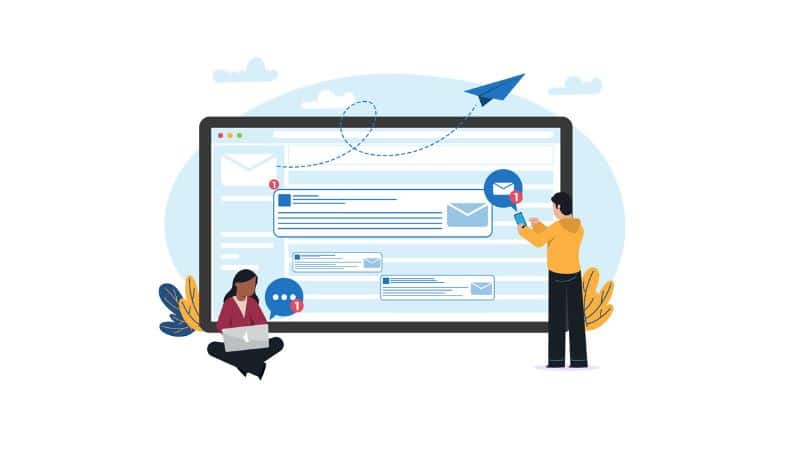Tips to Write an Email: Pro Email Writing Tips

The corporate and marketing world relies heavily on emails to communicate internally and externally. In this social media era, emails are still used for many purposes, including marketing products/services, finding new and engaging old customers, forwarding official news, etc.
Writing emails is a critical skill, regardless of the reason behind them. A well-written, engaging, informational, and error-free email can greatly impact your marketing and professional career. However, you can’t write them casually or use slang like you do in your social media DMs.
To write formal emails for professional and academic settings, you have to follow some rules or email ethics. If you aren’t aware of these ethics, the article might help. Here, you will learn pro email writing tips that will assist you in writing emails precisely.
Craft Precise Subject Lines
Just like a book is judged by its cover, an email is judged by its subject line. The subject line is the most prominent element of your email. Before even opening your mail, it’s the first thing the recipient encounters. Above all, it’s the only factor that influences the recipient to open the email.
Therefore, the first tip is to write catchy and precise email subjects. Your subject line should be concise, attention-grabbing, and relevant to your email content body. Write the main purpose of your email in this line so the recipients know what it is all about.
Write a short phrase that clearly mentions the reason for your email. One important point: Don’t try clickbait tactics, as they will harm your credibility; only mention what your email constitutes. Writing irrelevant subject lines will harm customers’ trust in you and your reputation.
Start with Appropriate Greetings
Consider emails like you communicate with someone in person. When meeting someone, we greet them and mention their name. Similarly, your opening word in the email should be the right salutation according to the recipient.
For instance, you can start with ‘Hi’ or ‘Hello’ for casual emails with your friends or close ones. However, in a formal email, you should start with Dear or Respected, followed by Sir/Madam or their good names. You can also write “Good morning,” “Good afternoon,” “Good evening,” “Good day, ” or ‘Greetings, ‘ etc.
Furthermore, always ensure that the greetings match the tone of the email. Thus, two factors define the type of salutation you would be sending, i.e., your relationship with the recipient and the type of email you are writing.
Write Concise and Engaging Email Body

The email body is its fundamental part, and you should focus on crafting engaging and to-the-point email content. Write it in a way that appeals to the recipient, has a proper structure and good readability, and accurately delivers your message.
Writing your message accurately doesn’t mean including huge text paragraphs, which will make the recipient less interested in reading and responding. In contrast, short and precise emails are always suggested to be written that will not consume recipients’ extra time.
If your email has become too lengthy and might be trimmed, you should make it concise with the aid of a summarizer. It will summarize your email briefly, removing all unnecessary information and keeping only key points. The text summarizer will help you stay concise and to the point in your emails.
Include a CTA
If you write a professional or marketing email, you should incorporate a relevant Call-To-Action button or CTA. A CTA is a text-bearing button that directs the user to perform a specific action.
CTAs are included in emails to take the recipient directly to the desired pages, URLs, forms, etc. Moreover, sometimes, the emails are written briefly to deliver important points only, while detailed information is provided on a separate page and can be accessed by clicking the CTA.
Therefore, you can include the CTAs to direct the specified action you want from your recipients. For instance, get connected, learn more, inquire, book now, reserve, avail of a discount, etc. However, always present them differently using distinct colors, fonts, and sizes.
Sign Off with a Professional Signature
Similar to email opening (starting with greetings and recipient name), end your email with an appropriate greeting and a professional signature. The email signature represents you as a professional, authentic, and credible person in the eyes of recipients.
Write signing off words like ‘Sincerely’, ‘Regards’, or ‘Best regards’ and mention your professional signature. It should include all information the recipient might need to communicate with you. Therefore, make sure to include your name, job title, company, and contact information. You can also add a link to your website or social media profiles.
However, use simple and direct signatures and exclude social handles or website links in some cases, they aren’t necessary. Create 2-3 signature templates and use the one that suits your current email requirements.
Review and Proofread
Perfection is an illusion. If you think you can write an error-free email in the first draft, then sorry to tell you, that you are mistaken. While writing emails, typo errors, missed punctuation, or spelling mistakes might exist that spoil your efforts if sent without fixing.
The most helpful tip to fix this issue is to spend a few minutes thoroughly reviewing your email. Proofread your email as a recipient with an active mind and look for minor mistakes. Ensure it doesn’t constitute typos, spelling, or grammatical mistakes.
If you find any, quickly correct them with correct spelling and grammar. Still, you can use a grammar checker if you suspect you may have overlooked minor mistakes.
Conclusion
While writing emails, you have to consider that they will represent your competency and professionalism. Therefore, it is crucial to write them accurately and without any room for errors. This means writing clearly and concisely, following proper structure, using correct salutations and subject lines, and ending notes with signatures. It also involves maintaining a professional and engaging tone and using to-the-point statements. Email writers can get assistance from summarize tools to deliver clear and to-the-point sentences so that recipients can easily understand them.